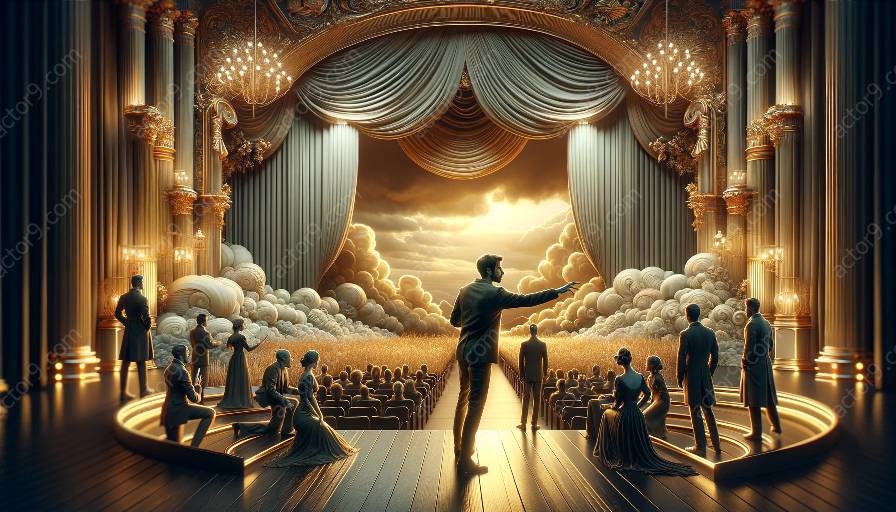Stage directions play a significant role in shaping the social and cultural context of acting and theater. They impact the dynamics of a performance, influence audience perceptions, and reflect the values and norms of various societies. Understanding the implications of stage directions provides invaluable insights into the complex interactions between performers, texts, and audience members.
The Influence of Stage Directions on Performances
Stage directions serve as a guide for actors, directors, and production teams, providing essential cues for movement, gestures, and positioning on stage. These directions not only affect the visual presentation of a performance but also influence the emotional and psychological portrayals of characters. For instance, a stage direction that requires a character to stand at a distance from others may convey feelings of isolation or emotional detachment. Moreover, precise stage directions contribute to the overall coordination and coherence of a production, ensuring that the intended atmosphere and mood are effectively conveyed to the audience.
Insights into Social Norms and Values
By examining stage directions within the context of different theatrical works, one can gain valuable insights into the social norms and values prevalent during the time of their creation. For example, stage directions related to gender roles, interpersonal dynamics, and power structures provide a window into the prevailing societal attitudes and cultural expectations. This exploration allows for a deeper understanding of historical contexts and sheds light on how theatrical representations have both mirrored and influenced social perceptions.
Impact on Audience Perceptions
Stage directions also play a crucial role in shaping audience perceptions and interpretations of a performance. Through the manipulation of spatial relationships, staging, and blocking, directors and playwrights can guide the audience's attention, emphasize key themes, and evoke specific emotional responses. A subtle change in a stage direction can alter the dynamics of a scene, leading to varied audience reactions and interpretations. Furthermore, stage directions contribute to the immersive nature of theater, enabling audiences to engage more fully with the narrative and characters.
Cultural Variations in Stage Directions
It is essential to recognize that stage directions and their implications are not universal across all cultures. Different theatrical traditions, historical contexts, and aesthetic sensibilities lead to diverse approaches to stage directions. For instance, the use of symbolic gestures, spatial arrangements, and movement patterns in traditional Asian theater differs significantly from Western conventions. By acknowledging these cultural variations, one can appreciate the rich diversity of theatrical expressions and recognize the unique social and cultural influences embedded in different performance traditions.
Adaptation and Interpretation
As theatrical works are adapted and reinterpreted over time, stage directions often undergo modifications to resonate with contemporary sensibilities and cultural sensibilities. Directors and actors engage in a process of negotiation with the original stage directions, seeking to honor the author's intentions while infusing the production with fresh insights and relevance. This creative interplay between tradition and innovation highlights the dynamic nature of stage directions and their ongoing impact on social and cultural interpretations within the realm of acting and theater.















































